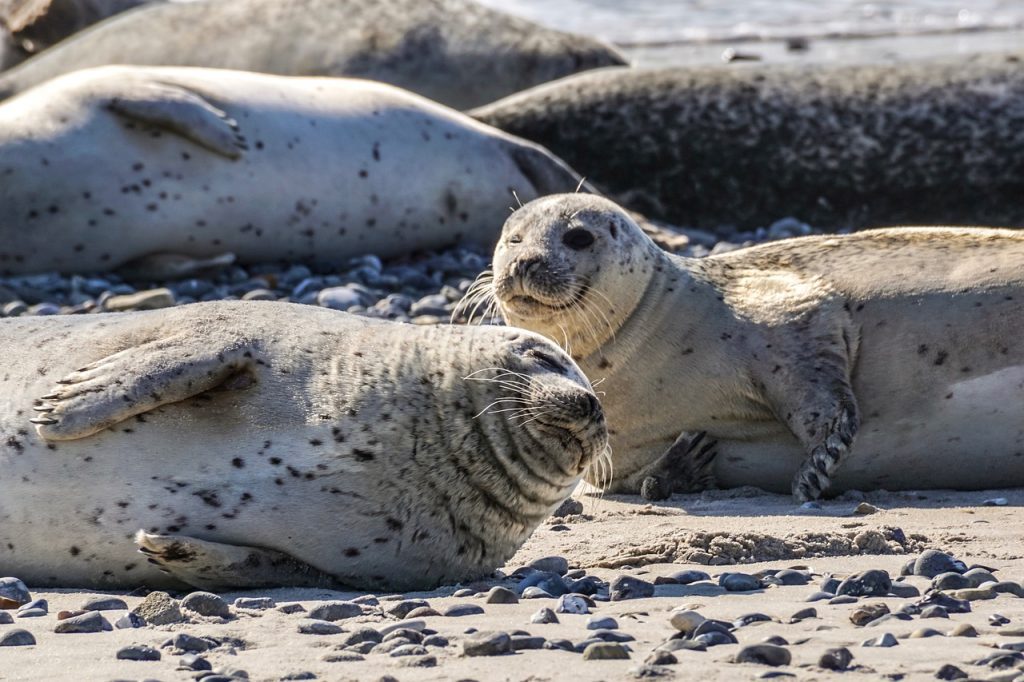Seals are some of the most fascinating creatures in our oceans. They’re playful, intelligent, and crucial for marine ecosystems. Yet, many seal species are in danger due to human activities like hunting, pollution, and climate change.
That’s why the International Seal Day, celebrated on March 22, is so important. It’s a day to raise awareness about seals, the challenges they face, and what we can do to protect them.
This article will take you through why seals matter, the biggest threats to their survival, and simple ways you can make a difference.
What Is International Seal Day?
International Seal Day was created to really throw light on the threats seals face and encourage conservation efforts worldwide.
The idea started in 1982 when activists and conservationists wanted to bring attention to the cruelty of commercial seal hunting.
Over time, it became a global movement focused on protecting seals from all kinds of human-caused dangers.
Today, wildlife organizations, environmentalists, and animal lovers use this day to educate people, push for stronger conservation laws, and take action to protect seals.
Why Are Seals Important?
Seals play a huge role in the health of marine ecosystems. Here’s why they matter:
- They Keep the Ocean Balanced – Seals are apex predators, meaning they help control fish populations. Without them, some fish species could overpopulate and throw the ecosystem off balance.
- They Support the Food Chain – Seals are a vital part of the marine food web. They provide food for sharks, orcas, and polar bears, keeping the natural order intact.
- They Show the Health of the Ocean – When seal populations decline, it’s a sign that something is wrong in the environment—like pollution, overfishing, or climate change.
- They’re Cultural Icons – Many indigenous communities have lived alongside seals for centuries and see them as symbols of strength, survival, and connection to nature.
The Biggest Threats to Seals
Unfortunately, many seal species are declining due to human activities.
Here are the biggest dangers they face:
1. Climate Change:
The Arctic and Antarctic are warming faster than anywhere else on Earth.
For species like the harp seal and ringed seal, this is a huge problem.
- These seals depend on sea ice to give birth and raise their pups.
- As the ice melts too early, young seals often drown or struggle to survive.
- Rising ocean temperatures also affect fish populations, making it harder for seals to find food.
2. Pollution and Plastic Waste:
Seals are directly harmed by plastic pollution.
- Many seals get tangled in fishing nets or plastic waste, which can lead to injury or death.
- Some mistake plastic for food, which causes serious health problems.
- Oil spills poison the water, affecting seals and the fish they eat.
3. Overfishing:
When humans overfish, they reduce the food supply for seals.
- Many species rely on fish like herring, cod, and anchovies.
- If these fish disappear, seals starve.
- Some fisheries view seals as competitors and kill them to protect their fishing industries.
4. Hunting and Poaching:
Seal hunting still happens in some parts of the world.
- While some indigenous groups hunt seals sustainably, commercial hunting for fur has been a major problem.
- Countries like Canada and Norway still allow the hunting of harp seals, which has sparked global protests.
- Illegal poaching for seal oil and body parts continues in some regions.
5. Bycatch in Fishing Gear:
Thousands of seals die every year after getting caught in fishing nets meant for other species.
- This is called bycatch, and it’s one of the leading causes of seal deaths.
- Many seals drown because they can’t escape the nets.
- Some suffer severe injuries from hooks and traps.
How You Can Help Save Seals
Even if you don’t live near the ocean, you can still help protect seals.
Here’s how:
1. Reduce Plastic Waste:
Plastic pollution is a major threat to seals. You can help by:
- Using a reusable water bottle instead of plastic ones.
- Bringing a cloth bag instead of using plastic bags.
- Avoiding single-use plastics like straws and cutlery.
2. Support Sustainable Seafood:
Overfishing threatens seal food supplies. To help, always eat fish from sustainable sources and avoid overfished species.
3. Raise Awareness:
Most people don’t know the threats seals face. You can help by:
- Sharing information on social media using hashtags like #InternationalSealDay.
- Teaching others about the importance of marine conservation.
- Supporting organizations that work to protect seals.
4. Avoid Marine Parks That Exploit Seals:
Some parks and aquariums keep seals in poor conditions for entertainment. Instead, support ethical wildlife sanctuaries that focus on rescue and rehabilitation.
5. Donate or Volunteer:
If you’re passionate about seal conservation, consider:
- Donating to organizations like The Marine Mammal Center, Sea Shepherd, or WWF.
- Volunteering for beach clean-ups and marine conservation projects.
Final Thoughts
International Seal Day is more than just a date on the calendar—it’s a chance to take action for seals and marine life.
These incredible creatures have existed for millions of years, but human activities are pushing them toward extinction.
The good news? We have the power to change that.
Seals deserve a future where they can thrive in the wild, not suffer because of human actions.
Want to Help? Start Here:
- Learn More: Visit The Marine Mammal Center
- Take Action: Join a beach clean-up near you
- Spread Awareness: Share this article with others
The more people know about seal conservation, the better chance we have of saving them.
